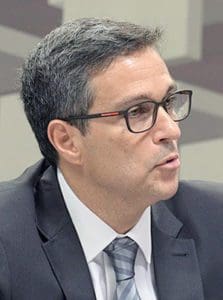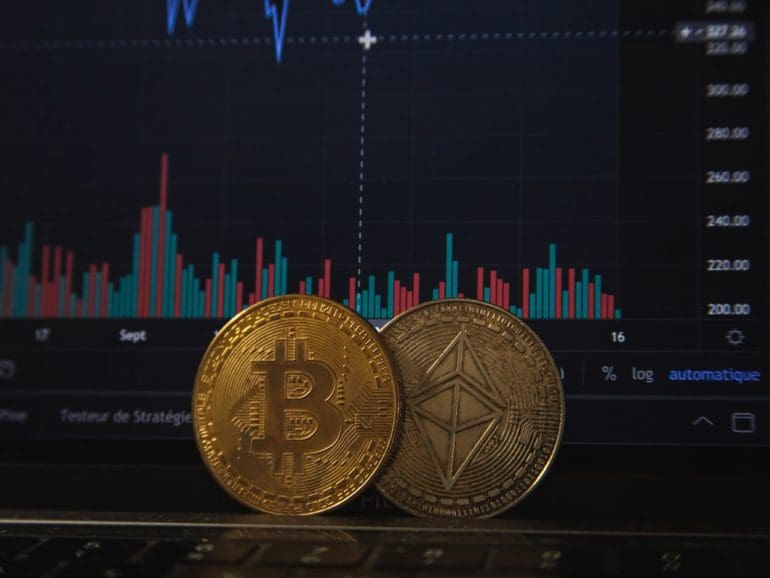From coins and notes to electronic currency, the history of money is constantly being written.
Now it’s becoming increasingly digital, and with the advent of cryptocurrencies, many central banks are considering issuing their virtual currencies.
In Latin America, regulators have shown a growing interest in the technology that powers cryptocurrencies to promote financial inclusion. At least five countries in the region are taking initial steps toward a central bank digital currency, or CBDC, in the following years.
The adoption of cryptocurrencies has been significant in Latin America but with a slightly different approach than in developed economies. In the region, unstable economies and high inflation often lead citizens to invest in crypto as a means to escape local currency or as a possibility to bypass capital controls or expensive cross-border transactions.
With growing adoption, some regulators identified a potential to modernize the financial system by introducing digital assets.
Interest from Brazil’s central bank
Leading the way is Brazil, whose central bank chief Roberto Campos Neto has recurrently praised the potential of blockchain technology. He said that cryptocurrency networks are “much more important” than assets such as bitcoin or ether and could bring “huge value” to the financial system in an event in early 2022.

“Regulators [worldwide] are too concerned [with] the asset itself. I think the network is much more important,” he said back then.
With that mindset, the central bank announced the creation of the “Digital Real,” its own CBDC, which is likely to be launched in 2024, although there is no specific date yet.
The governor had stated that pilots would be tested as early as this year. Still, it has since been postponed to 2023 due to a long, drawn-out conflict with central bank workers, who put up a three-month strike that delayed several initiatives in the innovation agenda.
At any rate, Brazil is the only major economy in Latin America currently developing a proof of concept, according to CBDC Tracker. With a smaller GDP, Uruguay is one step further, working on a pilot for the e-peso, a digital currency powered by its central bank. Elsewhere in the region, other countries are taking early steps in that direction: Mexico, Argentina, Chile, and Peru are all in the research stages.
Greater financial inclusion
In a 2022 report, the Bank for International Settlements, or BiS, said the number of Latin American central banks working on CBDCs projects was “unusually high.”
Unlike developed economies, the interest of regional central banks in Latin America resembles those of other emerging market peers. That is, developing CBDCs to promote greater financial inclusion and efficiency in the system.
In Brazil, the project comes on the heels of previous innovation. The regulator successfully implemented the low-cost instant payment system Pix roughly two years ago and has recently established a framework for open finance in the country. The latter allows financial institutions to share customers’ financial data –at the user’s consent- to improve credit access and reduce costs.
According to fintech experts, these two initiatives pave the way for the introduction of the CBDC as a final act of a broader plan to modernize the Brazilian financial system and promote competition.
“The Central Bank of Brazil not only wants to create a digital currency but an integrated ecosystem with payments, Open Finance, and data monetization,” Paulo Oliveira Andreoli, a fintech advisor, told Fintech Nexus. “The digital currency would interact with this entire ecosystem.”
In the report, the BIS highlighted CBDCs’ potential “to spur competition and reduce costs in the payment system, which are especially high in many Latin American economies.” The bank nonetheless warned about the risks of capital outflows for emerging economies looking to implement CBDCs.
The Digital Real
According to Campos Neto, the Digital Real will represent bank deposits through a token-based structure. These deposits could be converted into Digital Reais on demand. The regulator has not provided in detail the reach of its project and how the different actors would interact.
“The objective is to link traditional financial services to Web 3.0 services and facilitate the implementation of instant payment in other countries as well,” said Andreoli. This opens up the possibility of creating numerous products and services by financial institutions and fintechs, digitizing and “tokenizing” various types of operations.
Related:
- Brazil moves closer to crypto regulation with Senate vote
- Crypto regulation slow to move in Latin America
It will be possible, he said as an example, to create a smart contract to convert the right of ownership of a property to digital format and facilitate the process of buying and selling a property or a car, making payments, and the transfer of ownership of the property happen simultaneously.
Earlier in the year, the Brazilian central bank asked financial companies to send proposals and use cases related to the Digital Real. It received almost 50 proposals, chose nine, and is now working on simulating those. Some of those projects have come from the traditional banking sector, such as Itau, the banking association Febraban, and Mercado Bitcoin, the country’s crypto unicorn company.
Boost for the crypto industry
For many crypto enthusiasts, these early steps represent a validation for the industry.
“Interest from companies and governments leads us to believe crypto adoption is on track to make cryptocurrencies an efficient and robust investment and payment option in Brazil and around the world,” Vinícius Vieira, head of development at Bexs Banco in Brazil, wrote recently.


